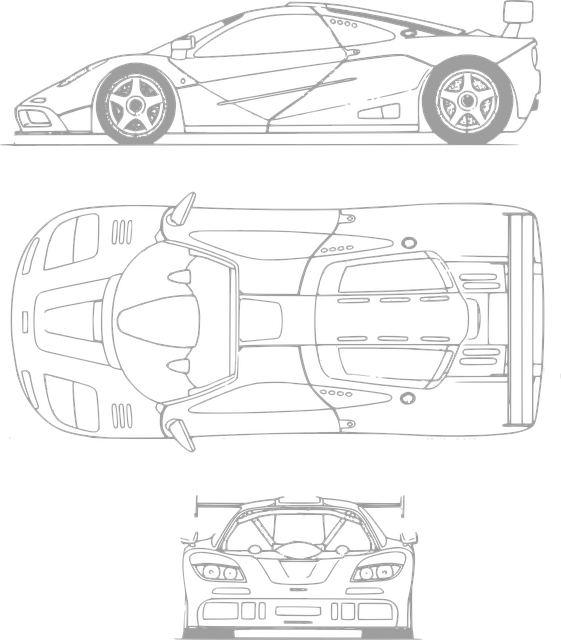Advanced 3D steel modeling techniques are transforming foundational design and construction. This technology enables engineers to create precise anchor bolt plans and base plate detailing, optimizing structural stability against lateral forces. By leveraging 3D models, professionals can simulate load capacity, spacing, and depth, ensuring robust foundation integrity. This method streamlines design, reduces on-site errors, and allows for customized base plates tailored to project needs, ultimately enhancing overall structural strength and security. 3D steel modeling is a revolutionary tool that ensures secure foundations through meticulous digital planning and visualization.
“Secure foundations are the bedrock of any construction project, and anchor bolts play a pivotal role in achieving this. This comprehensive guide delves into the essential components of anchor bolt plans and base plate detailing for enhanced structural integrity. We explore the benefits of utilizing 3D steel modeling to ensure precise design and execution.
From understanding the critical function of anchor bolts to optimizing load distribution through strategic base plate design, we provide a step-by-step approach for creating robust anchor bolt plans. Discover how 3D steel modeling revolutionizes foundation planning.”
Understanding Anchor Bolts and Their Role in Foundation Security
Anchor bolts are an essential component in ensuring secure and stable foundations for structures, playing a crucial role in withstanding lateral forces such as wind and earthquakes. These bolts, typically made from high-strength steel, are installed into concrete to provide a robust connection between the structure and its foundation. With advancements in technology, 3D steel modeling has become an invaluable tool for designing and visualizing these intricate systems, allowing engineers to meticulously plan and optimize anchor bolt arrangements for various projects.
By utilizing 3D modeling software, professionals can accurately model and simulate the behavior of anchor bolts, considering factors like load capacity, spacing, and depth. This innovative approach streamlines the design process, enhances structural integrity, and promotes efficient construction practices. Moreover, it enables a comprehensive understanding of the foundation’s overall stability, ensuring that every component, including base plates, is meticulously detailed to reinforce the structure against potential risks.
The Benefits of 3D Steel Modeling for Design and Precision
In today’s digital era, embracing advanced technologies like 3D steel modeling has become indispensable for architectural and engineering projects, especially when it comes to foundational elements like anchor bolt plans and base plate detailing. This innovative approach offers unparalleled precision and efficiency in design and construction. By creating detailed 3D models of steel structures, professionals can visualize and analyze complex geometric configurations with ease.
The benefits of 3D steel modeling extend beyond visual representation. It enables engineers to catch potential issues early in the design phase, reducing costly on-site mistakes. This method also facilitates better collaboration among team members as everyone works with the same accurate digital blueprint. Moreover, it streamlines the fabrication process by providing precise cutting and welding guidelines, ensuring a seamless transition from design to construction.
Base Plate Design Considerations for Optimal Load Distribution
When designing base plates for anchor bolts, considerations for optimal load distribution are paramount. 3D steel modeling allows engineers to meticulously map out the structural layout, ensuring uniform stress patterns and preventing concentrated pressures that could compromise the foundation’s integrity. By strategically placing bolt holes and incorporating reinforcement ribs or webbing within the plate, the overall strength and stability of the structure is significantly enhanced.
This meticulous approach leverages the power of 3D modeling to create base plates tailored to specific project requirements. Such customization optimizes load transfer from the structure to the ground, accounting for various factors like soil conditions, building weight, and expected environmental stresses. This results in a robust foundation capable of supporting the intended structural loads safely and efficiently.
Step-by-Step Guide to Creating Effective Anchor Bolt Plans
Creating effective anchor bolt plans involves a meticulous process that leverages 3D steel modeling for precise detailing. Begin by understanding the structural requirements and site-specific conditions, which dictate bolt spacing, length, and load capacity. Utilize specialized software to create digital models of the foundation, incorporating detailed dimensions and material specifications.
Next, identify critical points where anchor bolts will be placed, ensuring alignment with future construction elements like walls or equipment. Within the 3D model, visualize and simulate the bolts’ interaction with the base plate and surrounding structure, checking for potential conflicts or clearances. This step-by-step approach allows for thorough analysis and optimization, ultimately leading to secure foundations that withstand structural stresses efficiently.
In conclusion, securing foundations with anchor bolts and meticulous base plate design is paramount for structural integrity. By leveraging advanced technologies like 3D steel modeling, engineers can achieve unparalleled precision in both bolt placement and base plate detailing. This ensures optimal load distribution and the overall strength of any construction project. A well-planned anchor bolt system, combined with thoughtful base plate considerations, serves as a robust foundation for structures, safeguarding against even the most demanding environmental conditions.
